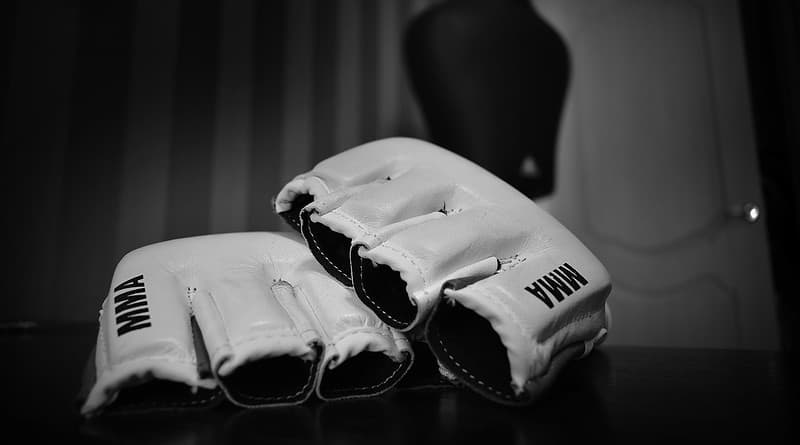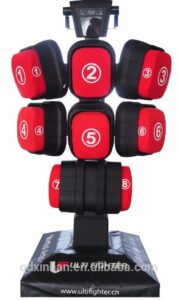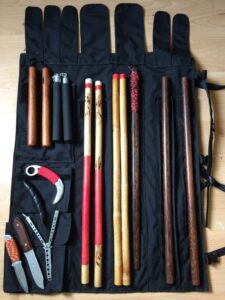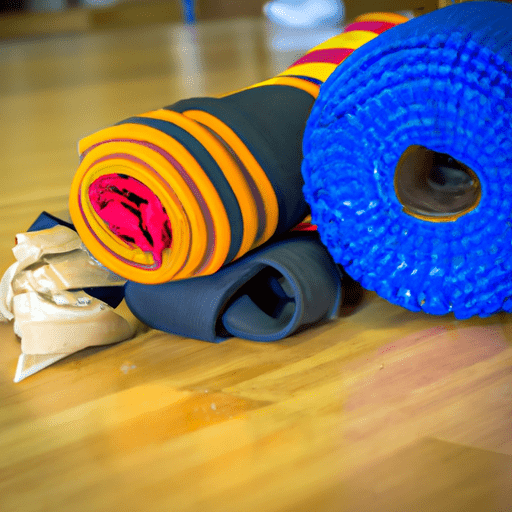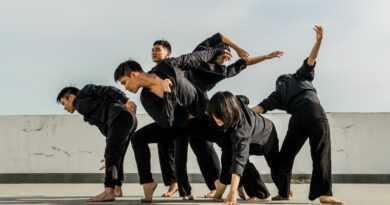Equipment in Martial Arts
“Equip Yourself for Success in Martial Arts!”
Table of Contents
-
- Introduction
- The Best Martial Arts Equipment for Beginners
- The Different Types of Martial Arts Training Equipment
- The Benefits of Investing in Quality Martial Arts Equipment
- The Different Types of Martial Arts Mats
- How to Care for Your Martial Arts Equipment
- The Benefits of Training with Martial Arts Equipment
- The Pros and Cons of Using Martial Arts Weapons
- How to Choose the Right Martial Arts Equipment for Your Needs
- The Different Types of Martial Arts Equipment
- The Benefits of Wearing Protective Gear in Martial Arts
- Conclusion
Introduction
Equipment is an important part of martial arts training. It can help protect you from injury, improve your technique, and make your training more enjoyable. From gloves and pads to weapons and training aids, there is a wide variety of equipment available to martial artists. Whether you are a beginner or a seasoned practitioner, having the right equipment can make a big difference in your martial arts journey.
The Best Martial Arts Equipment for Beginners
Martial arts are a great way to stay fit, learn self-defense, and develop discipline. For beginners, it is important to have the right equipment to ensure safety and maximize the effectiveness of training. Here are some of the best martial arts equipment for beginners:
1. Hand Wraps: Hand wraps are essential for protecting the hands and wrists during training. They provide support and cushioning to the bones and joints, reducing the risk of injury.
2. Mouthguard: A mouthguard is a must-have for any martial artist. It helps protect the teeth and gums from impact and can also reduce the risk of concussion.
3. Protective Gear: Protective gear such as headgear, shin guards, and gloves are essential for any martial artist. They help protect the body from injury and allow for more intense training.
4. Training Weapons: Training weapons such as wooden swords, staffs, and nunchucks are great for learning the basics of martial arts. They help to develop coordination, balance, and accuracy.
5. Training Mats: Training mats are essential for any martial artist. They provide a safe and comfortable surface to practice on and help to reduce the risk of injury.
By investing in the right equipment, beginners can ensure that they are safe and get the most out of their martial arts training.
The Different Types of Martial Arts Training Equipment
Martial arts training equipment is essential for any martial artist looking to improve their skills and technique. There are a variety of different types of equipment available, each designed to help martial artists hone their skills and become better fighters. From protective gear to training aids, here is a look at the different types of martial arts training equipment.
Protective Gear: Protective gear is essential for any martial artist, as it helps to protect them from injury during training. Common types of protective gear include headgear, mouthguards, shin guards, and gloves. Headgear is designed to protect the head and face from strikes, while mouthguards help to protect the teeth and jaw. Shin guards help to protect the shins from kicks, while gloves help to protect the hands and wrists from punches.
Training Aids: Training aids are designed to help martial artists improve their technique and form. Common training aids include punching bags, focus mitts, and grappling dummies. Punching bags are designed to help martial artists practice their punching and kicking techniques, while focus mitts help to improve accuracy and timing. Grappling dummies are designed to help martial artists practice their grappling techniques.
Training Weapons: Training weapons are designed to help martial artists practice their weapon techniques. Common training weapons include wooden swords, staffs, and nunchucks. Wooden swords are designed to help martial artists practice their sword techniques, while staffs help to improve balance and coordination. Nunchucks are designed to help martial artists practice their striking and blocking techniques.
Training Uniforms: Training uniforms are designed to help martial artists stay comfortable and focused during training. Common training uniforms include karate gis, judo gis, and taekwondo uniforms. Karate gis are designed to help martial artists practice their karate techniques, while judo gis help to improve grappling techniques. Taekwondo uniforms are designed to help martial artists practice their kicking and striking techniques.
Martial arts training equipment is essential for any martial artist looking to improve their skills and technique. From protective gear to training aids, there are a variety of different types of equipment available to help martial artists hone their skills and become better fighters.
The Benefits of Investing in Quality Martial Arts Equipment
Investing in quality martial arts equipment is an important decision for any martial artist. Quality martial arts equipment can provide a number of benefits, including improved safety, enhanced performance, and increased longevity.
Safety is a primary concern for any martial artist, and quality martial arts equipment can help to ensure that safety. Quality martial arts equipment is designed to meet the highest safety standards, and is often made from durable materials that can withstand the rigors of martial arts training. Quality martial arts equipment can also provide additional protection, such as padding or shock-absorbing materials, which can help to reduce the risk of injury.
In addition to safety, quality martial arts equipment can also help to enhance performance. Quality martial arts equipment is designed to provide the best possible support and stability, allowing martial artists to move more freely and with greater precision. Quality martial arts equipment can also help to improve balance and coordination, which can lead to improved performance in martial arts competitions.
Finally, quality martial arts equipment can also help to increase the longevity of martial arts equipment. Quality martial arts equipment is designed to last, and is often made from materials that are resistant to wear and tear. Quality martial arts equipment can also be easily maintained, which can help to extend its lifespan.
Investing in quality martial arts equipment is an important decision for any martial artist. Quality martial arts equipment can provide a number of benefits, including improved safety, enhanced performance, and increased longevity. Quality martial arts equipment can help to ensure that martial artists are safe and can perform at their best, while also helping to extend the life of their equipment.
The Different Types of Martial Arts Mats
Martial arts mats are an essential part of any martial arts practice. They provide a safe and comfortable surface for practitioners to practice their techniques and help to reduce the risk of injury. There are a variety of different types of martial arts mats available, each with its own unique features and benefits.
Foam Mats: Foam mats are the most common type of martial arts mat. They are made from a variety of materials, including polyethylene foam, cross-linked polyethylene foam, and closed-cell foam. Foam mats are lightweight, durable, and provide excellent cushioning and shock absorption. They are also easy to clean and maintain.
Tatami Mats: Tatami mats are traditional Japanese mats made from woven straw and rice straw. They are thicker and heavier than foam mats and provide superior cushioning and shock absorption. They are also more expensive than foam mats, but they are more durable and can last for many years.
Rubber Mats: Rubber mats are made from recycled rubber and are designed to provide superior cushioning and shock absorption. They are also more expensive than foam mats, but they are more durable and can last for many years.
Interlocking Mats: Interlocking mats are made from a variety of materials, including foam, rubber, and vinyl. They are designed to interlock together to create a larger mat surface. They are lightweight, durable, and provide excellent cushioning and shock absorption.
Grappling Mats: Grappling mats are designed specifically for grappling and ground fighting. They are made from a variety of materials, including foam, rubber, and vinyl. They are thicker and heavier than foam mats and provide superior cushioning and shock absorption.
No matter which type of martial arts mat you choose, it is important to make sure that it is the right size and thickness for your needs. The right mat can make a big difference in your martial arts practice and help to reduce the risk of injury.
How to Care for Your Martial Arts Equipment
Taking care of your martial arts equipment is essential for ensuring that you can practice safely and effectively. Proper maintenance of your equipment will also help to extend its life and keep it in good condition. Here are some tips for taking care of your martial arts equipment.
Clean and Disinfect
It is important to regularly clean and disinfect your martial arts equipment. This will help to prevent the spread of germs and bacteria, and will also help to keep your equipment in good condition. Use a mild soap and warm water to clean your equipment, and then use a disinfectant to kill any remaining germs.
Store Properly
When not in use, it is important to store your martial arts equipment properly. Make sure to keep it in a dry, cool place away from direct sunlight. This will help to prevent damage from heat and moisture.
Inspect Regularly
Inspect your martial arts equipment regularly for any signs of wear and tear. If you notice any damage, it is important to repair or replace the equipment as soon as possible. This will help to ensure that your equipment is safe to use.
Use Appropriately
It is important to use your martial arts equipment appropriately. Make sure to follow the instructions for use and never use the equipment for anything other than its intended purpose. This will help to ensure that your equipment is used safely and effectively.
By following these tips, you can ensure that your martial arts equipment is well cared for and in good condition. Taking the time to properly maintain your equipment will help to ensure that you can practice safely and effectively.
The Benefits of Training with Martial Arts Equipment
Martial arts training is an excellent way to stay fit and healthy, as well as to learn self-defense. Training with martial arts equipment can provide a number of additional benefits, including improved physical fitness, increased mental focus, and enhanced self-confidence.
Physical fitness is one of the primary benefits of training with martial arts equipment. Working with martial arts equipment can help to improve strength, flexibility, and endurance. Training with martial arts equipment can also help to improve coordination and balance, as well as to develop muscle tone. Additionally, martial arts equipment can be used to practice specific techniques, such as kicks and punches, which can help to improve overall physical fitness.
Mental focus is another benefit of training with martial arts equipment. Working with martial arts equipment can help to improve concentration and focus, as well as to develop mental discipline. Training with martial arts equipment can also help to improve problem-solving skills, as well as to increase self-awareness. Additionally, martial arts equipment can be used to practice specific techniques, such as blocks and counters, which can help to improve overall mental focus.
Self-confidence is another benefit of training with martial arts equipment. Working with martial arts equipment can help to build self-esteem and self-confidence. Training with martial arts equipment can also help to develop self-discipline and self-control, as well as to increase self-awareness. Additionally, martial arts equipment can be used to practice specific techniques, such as throws and submissions, which can help to improve overall self-confidence.
In conclusion, training with martial arts equipment can provide a number of benefits, including improved physical fitness, increased mental focus, and enhanced self-confidence. Martial arts equipment can be used to practice specific techniques, such as kicks and punches, blocks and counters, and throws and submissions, which can help to improve overall physical fitness, mental focus, and self-confidence.
The Pros and Cons of Using Martial Arts Weapons
The use of martial arts weapons can be a great way to enhance one’s martial arts training. However, there are both pros and cons to using these weapons. It is important to understand both sides of the argument before deciding whether or not to incorporate them into one’s martial arts practice.
One of the primary advantages of using martial arts weapons is that they can help to improve one’s technique. By using weapons, practitioners can learn to move more efficiently and accurately. This can help to improve their overall martial arts skills. Additionally, weapons can also help to increase one’s strength and power. This can be beneficial for those who are looking to increase their physical capabilities.
On the other hand, there are some potential drawbacks to using martial arts weapons. For one, they can be dangerous if not used properly. It is important to ensure that all safety protocols are followed when using weapons. Additionally, weapons can be expensive and require regular maintenance. This can be a financial burden for some practitioners.
In conclusion, the use of martial arts weapons can be a great way to enhance one’s martial arts training. However, it is important to consider both the pros and cons before deciding whether or not to incorporate them into one’s practice. By understanding both sides of the argument, practitioners can make an informed decision about whether or not to use weapons in their martial arts training.
How to Choose the Right Martial Arts Equipment for Your Needs
Choosing the right martial arts equipment for your needs is an important decision. It is important to consider the type of martial arts you are practicing, the level of intensity you are looking for, and the amount of money you are willing to spend.
When selecting martial arts equipment, it is important to consider the type of martial arts you are practicing. Different martial arts require different types of equipment. For example, if you are practicing karate, you will need a karate gi, a belt, and a pair of karate shoes. If you are practicing judo, you will need a judo gi, a belt, and a pair of judo shoes.
The level of intensity you are looking for is also important when selecting martial arts equipment. If you are looking for a more intense workout, you may want to invest in heavier equipment such as boxing gloves, shin guards, and headgear. If you are looking for a more relaxed workout, you may want to invest in lighter equipment such as foam pads and kick shields.
Finally, it is important to consider the amount of money you are willing to spend on martial arts equipment. There are a variety of options available, ranging from basic equipment to more expensive, professional-grade equipment. It is important to determine your budget before making any purchases.
By considering the type of martial arts you are practicing, the level of intensity you are looking for, and the amount of money you are willing to spend, you can ensure that you select the right martial arts equipment for your needs. With the right equipment, you can enjoy a safe and effective martial arts workout.
The Different Types of Martial Arts Equipment
Martial arts is a form of physical activity that involves the use of various techniques to defend oneself or attack an opponent. It is a popular form of exercise and self-defense, and it requires the use of specialized equipment to ensure safety and effectiveness. There are many different types of martial arts equipment available, and each type has its own unique purpose.
The most common type of martial arts equipment is protective gear. This includes items such as headgear, gloves, shin guards, and mouth guards. Headgear is designed to protect the head from strikes and blows, while gloves are used to protect the hands and wrists. Shin guards are used to protect the shins from kicks, and mouth guards are used to protect the teeth and jaw from punches.
Another type of martial arts equipment is weapons. These include items such as swords, staffs, and nunchucks. Swords are used to practice swordplay, while staffs are used to practice staff fighting. Nunchucks are used to practice nunchaku techniques.
Training equipment is also an important part of martial arts. This includes items such as punching bags, focus mitts, and grappling dummies. Punching bags are used to practice punching and kicking techniques, while focus mitts are used to practice accuracy and timing. Grappling dummies are used to practice grappling techniques.
Finally, martial arts uniforms are also important. These include items such as gis, karategis, and hakamas. Gis are traditional martial arts uniforms, while karategis are designed specifically for karate. Hakamas are traditional Japanese martial arts uniforms.
In conclusion, there are many different types of martial arts equipment available. Protective gear is used to protect the body from strikes and blows, while weapons are used to practice swordplay and other techniques. Training equipment is used to practice punching and kicking techniques, while uniforms are used to identify the practitioner. All of these items are essential for martial arts practitioners, and they should be chosen carefully to ensure safety and effectiveness.
The Benefits of Wearing Protective Gear in Martial Arts
The practice of martial arts is a centuries-old tradition that has been passed down through generations. It is a form of physical and mental exercise that can help to improve strength, agility, and coordination. While martial arts can be a great way to stay in shape and learn self-defense, it is important to remember that it can also be dangerous. That is why it is essential to wear protective gear when practicing martial arts.
Protective gear is designed to reduce the risk of injury while practicing martial arts. This includes items such as headgear, mouthguards, gloves, and shin guards. Headgear is designed to protect the head and face from strikes and kicks. Mouthguards help to protect the teeth and jaw from impact. Gloves are used to protect the hands and wrists from injury. Shin guards are worn to protect the shins from kicks and strikes.
Wearing protective gear can help to reduce the risk of serious injury while practicing martial arts. Headgear can help to protect the head and face from impact, while mouthguards can help to protect the teeth and jaw. Gloves can help to protect the hands and wrists from injury, and shin guards can help to protect the shins from kicks and strikes.
In addition to reducing the risk of injury, wearing protective gear can also help to improve performance. Headgear can help to improve visibility, while gloves can help to improve grip. Shin guards can help to improve balance and stability, and mouthguards can help to improve breathing.
Finally, wearing protective gear can help to improve confidence. Knowing that you are protected can help to give you the confidence to take risks and push yourself further.
In conclusion, wearing protective gear is essential when practicing martial arts. It can help to reduce the risk of injury, improve performance, and increase confidence. So, make sure to always wear protective gear when practicing martial arts.
Conclusion
In conclusion, equipment is an important part of martial arts. It can help protect practitioners from injury, improve their performance, and provide a more enjoyable experience. While some equipment is necessary for safety, others are optional and can be used to enhance the martial arts experience. Ultimately, the type of equipment used is up to the individual practitioner and should be chosen based on their needs and preferences.
